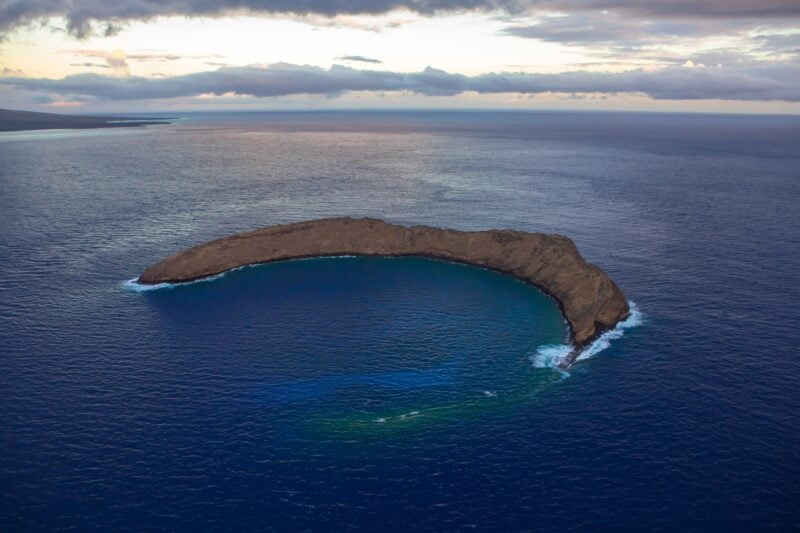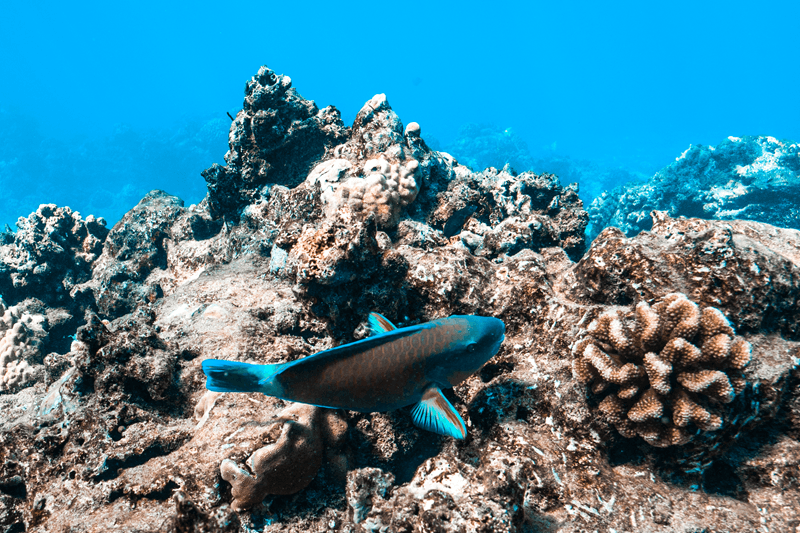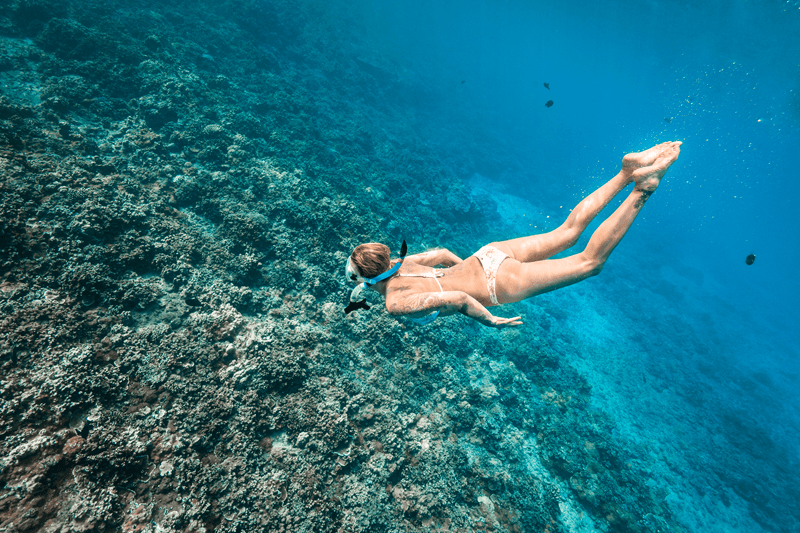Molokini Crater Overview
Molokini is a crescent-shaped, partially submerged volcanic crater in the Alalakeiki Channel between Maui and Kahoʻolawe. Known for exceptional water clarity and protected reefs, it’s one of Hawaiʻi’s most unique marine habitats. This page covers location, conditions and visibility, regulations and moorings, and the marine life you’re likely to see.
Want to go out there? See our Molokini Crater Snorkeling Tour for dates, boat details, and what’s included.
What is Molokini Crater?
Molokini is often called a crater, but it’s actually a rare geological formation known as a tuff cone—a type of volcanic vent formed by explosive interactions between magma and seawater. Rising about 330 feet from the ocean floor, Molokini’s unique shape creates a variety of microclimates within a small stretch of reef. These diverse conditions support an impressive ecosystem, home to over 100 types of coral and more than 250 species of tropical fish within its sheltered crescent.
Where Is Molokini?
Molokini is a crescent-shaped volcanic islet located about three miles off Maui’s southwest coast, between Māʻalaea Harbor and the island of Kahoʻolawe. Accessible only by boat, this partially submerged crater rises from the ocean floor to form a natural marine sanctuary. Most snorkeling and diving tours to Molokini depart from Māʻalaea Harbor or Kihei Boat Ramp, making it an easy half-day adventure for South and Central Maui visitors. The crater’s curved shape creates a protected inner lagoon ideal for snorkeling, while its outer “back wall” drops steeply into deep blue water popular with scuba divers.

Visibility & Conditions
Molokini’s location in the sheltered Alalakeiki Channel offers some of the clearest water in all of Hawaiʻi. Mornings are typically calm, with light winds and glassy seas—perfect for snorkeling. As the trade winds pick up through late morning and afternoon, waves can increase, which is why most tours visit early in the day. The crater’s crescent walls block surface chop and currents, creating consistently calm and clear conditions inside. Visibility often exceeds 100 to 150 feet, allowing snorkelers to see coral gardens and schools of fish with stunning clarity.
DLNR Rules, Moorings & Etiquette
Molokini Crater is protected as both a State Marine Life Conservation District and a Seabird Sanctuary, managed by Hawaiʻi’s Department of Land and Natural Resources (DLNR). To help preserve its fragile ecosystem:
- Only permitted commercial operators may use the established moorings—anchoring on coral is prohibited.
- Always give turtles and other marine life at least 10 feet (3 meters) of space. Never touch, feed, or chase them.
- Use reef-safe sunscreen and avoid standing on coral or stirring up sediment.
These guidelines ensure Molokini remains pristine for future generations of snorkelers and divers.
Marine Life You May See
Beneath the surface, Molokini Crater teems with colorful life. Over 250 species of tropical fish and 100 varieties of coral thrive here, many found nowhere else on Earth. Expect to spot bright butterflyfish, parrotfish, triggerfish, and the famous humuhumunukunukuāpuaʻa—Hawaiʻi’s state fish. Green sea turtles occasionally glide through, and lucky visitors may even see eagle rays. During winter, humpback whales are often heard singing offshore. Always move slowly and respectfully in the water to avoid disturbing this delicate ecosystem.
Above water, Molokini is a seabird sanctuary. During the summer months, thousands of birds flock to Molokini to nest there. These include the Great Frigatebird (‘iwa), the red-footed booby (ʻā), and the Hawaiian shearwater (ʻuaʻu kani).
Molokini’s History
During World War II, Molokini was used for target practice. Post‑war removals of unexploded ordnance—especially 1970s–1980s detonations—left visible scars and damaged coral inside the crater. The islet and surrounding waters were later protected as the Molokini Shoal Marine Life Conservation District (1977).
When to Go
The best time to snorkel Molokini is in the early morning, when the ocean is calmest and visibility is highest. Conditions are generally best from April through September, when Maui’s weather is drier and trade winds lighter. In winter, stronger swells can occur, but tours still operate when seas are safe. Always check in advance with your tour operator for the latest weather and ocean conditions before your trip.
FAQs
Can you visit Molokini without a boat?
No—Molokini is offshore and has no public access by land. Visitors must join a licensed boat tour to reach it.
Is Molokini good for beginners?
Yes, often! The crater’s interior offers calm, protected water, ideal for new snorkelers. Choose a permitted operator that provides flotation gear and in-water guidance.
Planning to Snorkel?
Check out our Molokini Crater Snorkeling Tour for availability, boat details, and everything included.
GOOGLE REVIEWS


